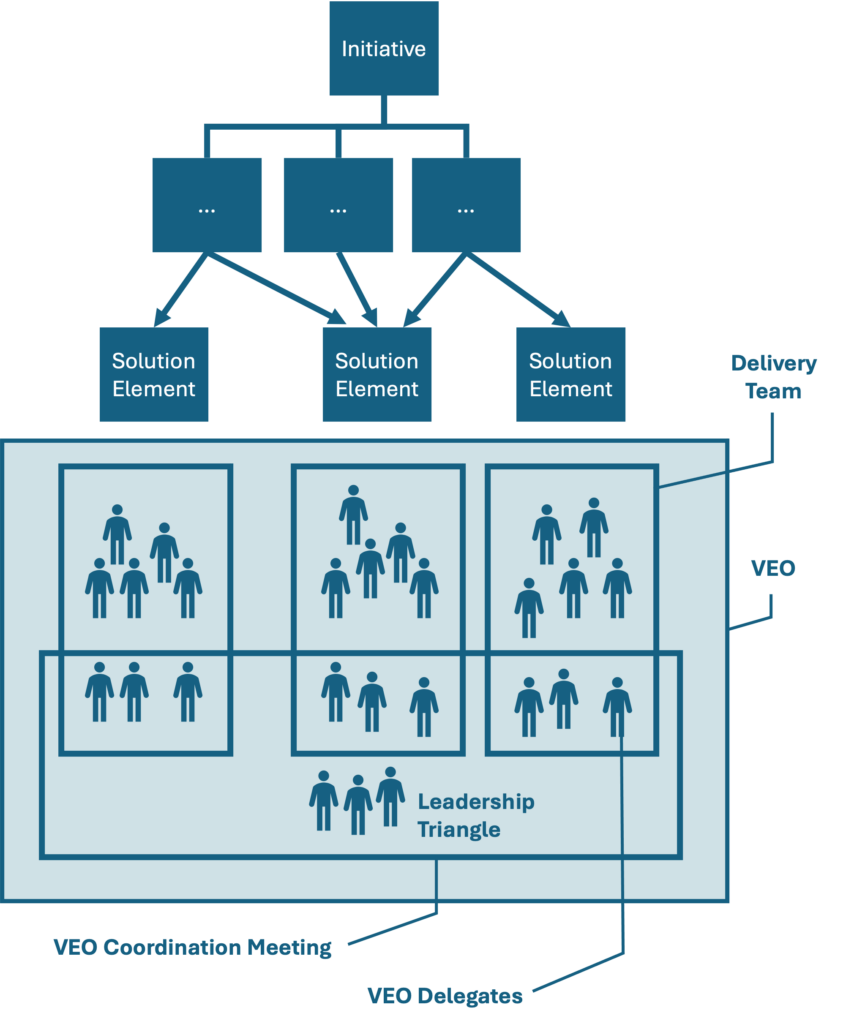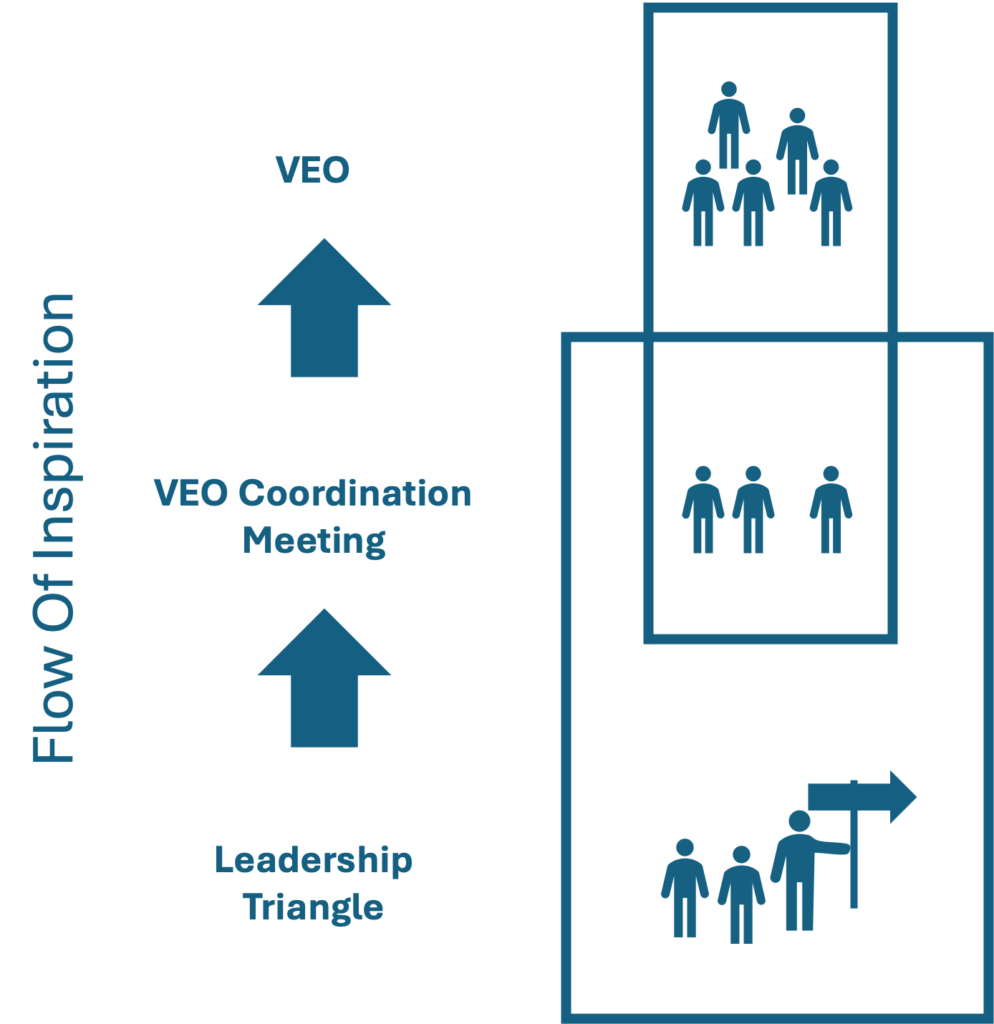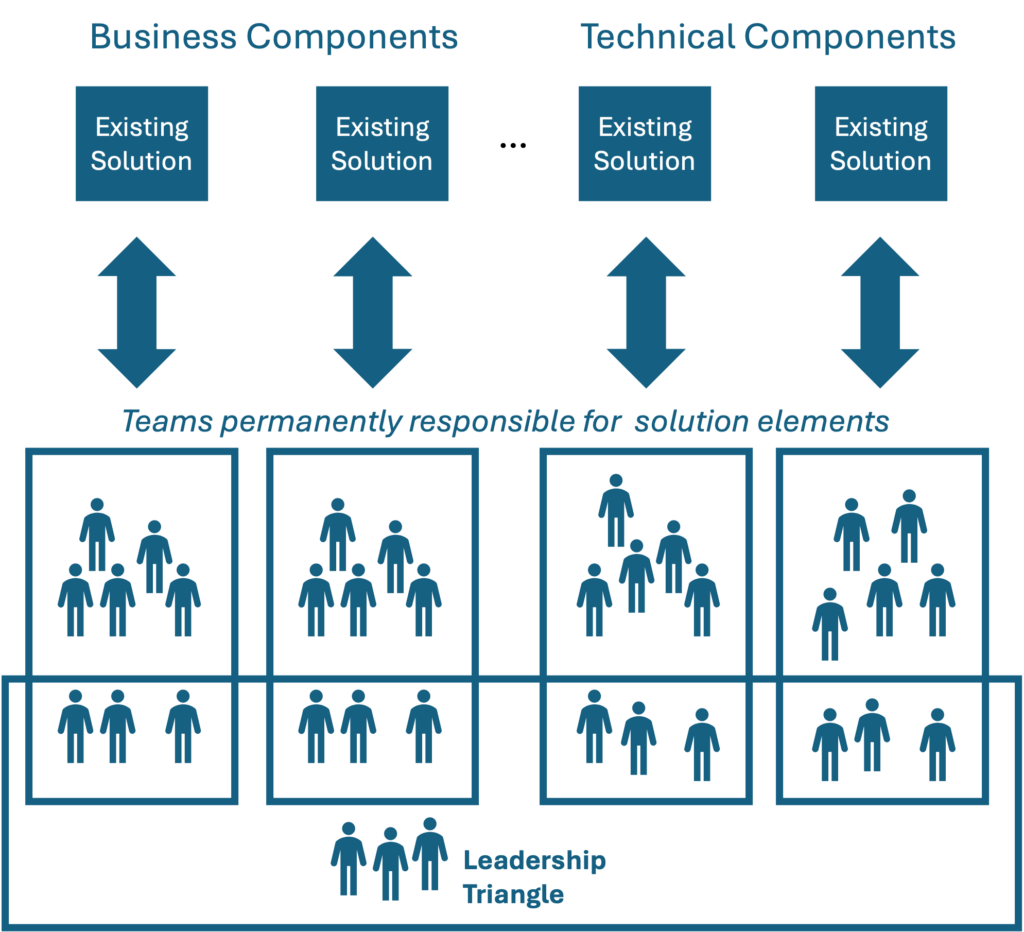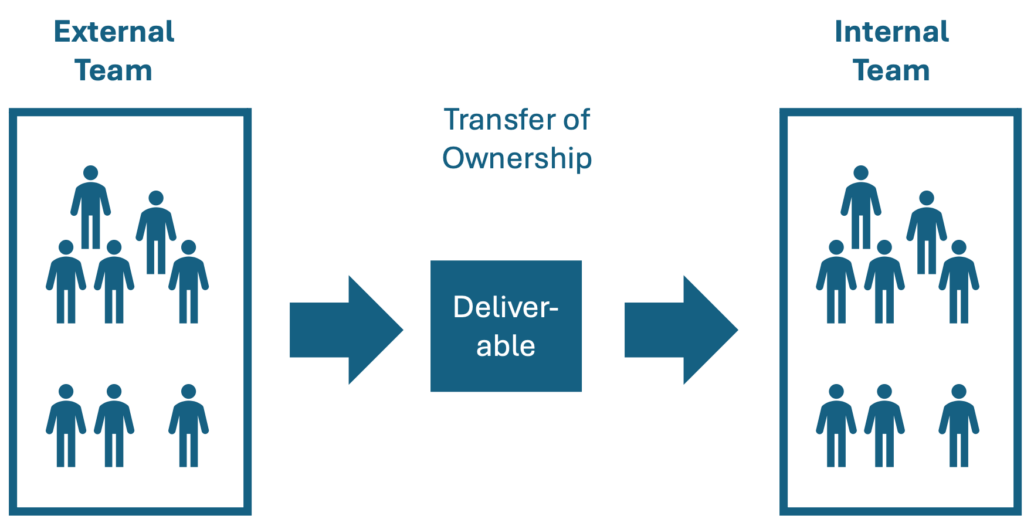Virtual End-To-End Solution Organization (VEO)
The VEO comprises all delivery teams that are required for the operational implementation of a major change. Each delivery team is responsible for one or more solution elements of the end-to-end solution.
We distinguish three types of teams:
- Permanent teams from the organisational structure that temporarily contribute to an initiative (e.g. agile teams or teams from a competence centre)
- External teams, hired for the duration of the initiative
- Task forces with members from different parts of the overall organisation
Please note that we should not make any assumptions about how the individual delivery teams are organised – agile, traditional or otherwise.
All of these teams are represented by delegates on the VEO Coordination Meeting. The delegates represent the teams in decisions on the solution, clarification of requirements, or coordination.

Flow Of Inspiration
The obvious reason for setting up the VEO and its Coordination Meeting is that the Leadership Triangle needs to know who it is working with in order to meaningfully bring together the contributions of the different parts of the organisation to the end-to-end solution.
In addition to this apparent necessity, the VEO and the Coordination Meeting make it possible to increase identification with the initiative within the company. The Leadership Triangle regularly explains and promotes the initiative in the Coordination Meeting. The members of the Coordination Meeting then carry this information to their delivery teams. In addition, the initiative is on the agenda of the regular planning meetings of the delivery teams, which provides even more visibility.
It is important that the contributors to an initiative know each other and know that they are working towards a common goal.

Permanent Teams
Permanent teams can be teams from an agile organisation or members of a competence centre or a traditional department.
The advantage of working with permanent teams is that the team members already know the organisation well and hopefully identify positively with the organisation’s goals.
These teams can work exclusively for the initiative for a period of time or share their capacity with other projects and maintenance tasks. Typically, teams such as IAM, API governance, UX design, etc. only allocate part of their capacity to a specific initiative.

External Teams
Recruiting external teams is necessary when new skills or additional capacity is needed. In many cases external teams are a good way to scale up an organization for the duration of an initiative.
However, in one important respect external teams require special attention: Know-how and results must be transferred to permanent teams before the initiative can be terminated. Therefore, the future owners of the results must be involved, e.g. in the selection of a technology or the solution strategy.

Task Forces
Task forces are set up to cover overarching topics of the initiative or interfaces in no man’s land between the areas of different teams.
Typical examples are the initiative’s data model or a basic technology. Technical interfaces such as events or APIs between IT components of different teams must also be developed jointly in a task force.
Setting up task forces can bring enormous benefits for an initiative. In the absence of teams covering overarching topics, each delivery team comes up with different, locally optimised solutions that increase complexity and cause duplication of work.

Meeting Schedules
Meetings with the entire VEO should be infrequent events. It is a good idea to hold a kick-off meeting after project sign-off and progress meetings once every 6 to 12 months. Beyond that, however, you should let the teams work.
For regular coordination, it is more efficient from a company perspective if the Leadership Triangle participates in the regular planning meetings of the various teams. The tasks are fine-tuned at these meetings. The Leadership Triangle acts as a communication relay between the teams and with stakeholders and sponsors.
Cross-team alignment of the implementation teams is achieved in the Coordination Meeting, which should take place every 4 weeks once the initiative is up and running smoothly.

- Dirk Krafzig
Entrepreneur, SOAPARK
